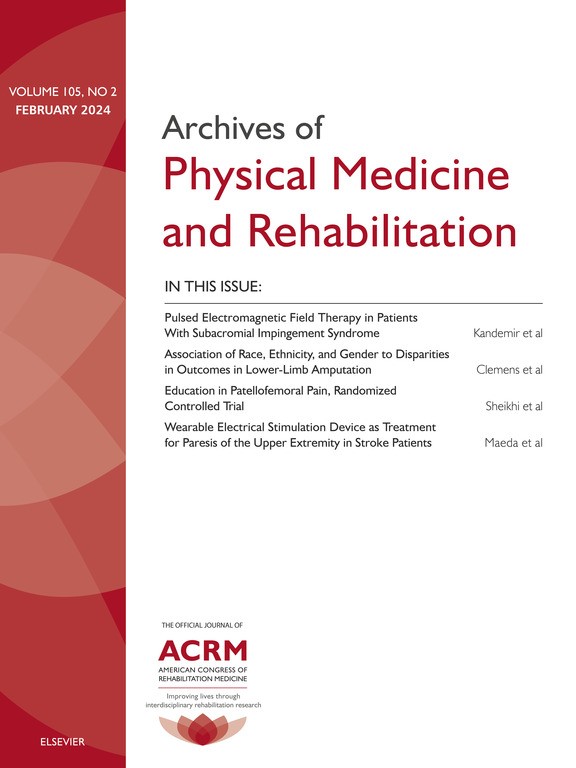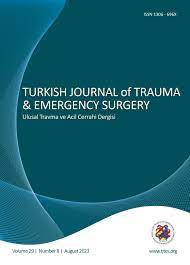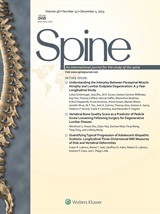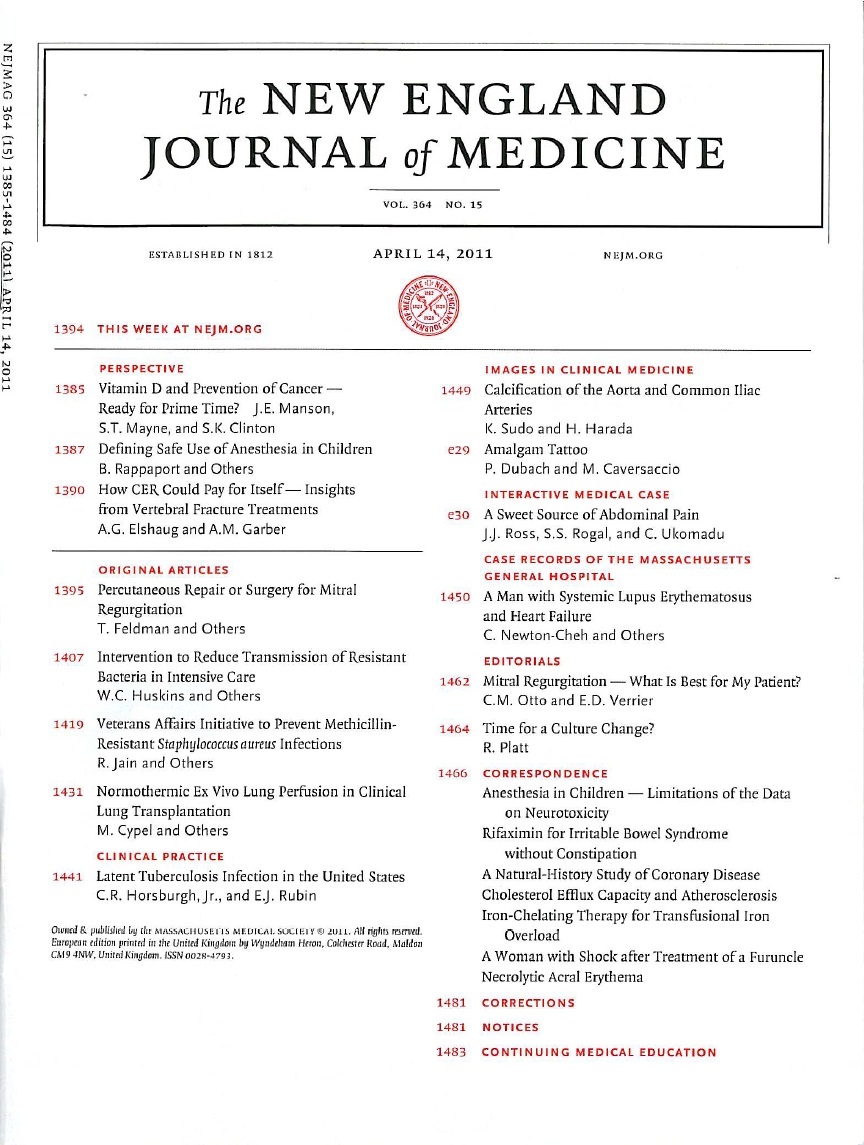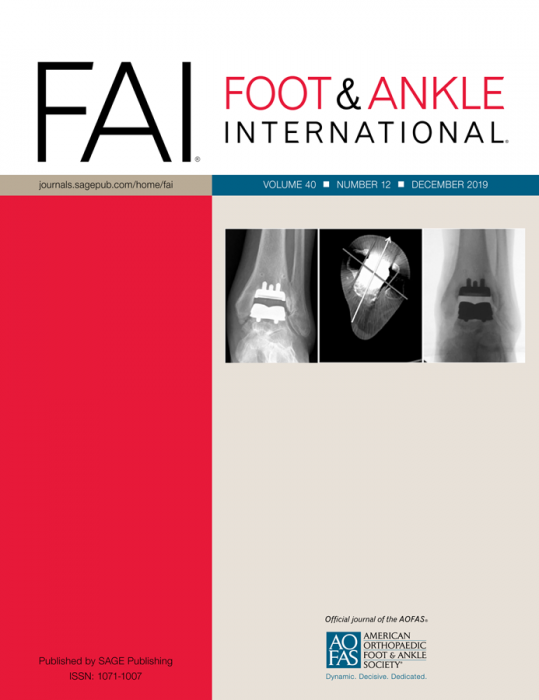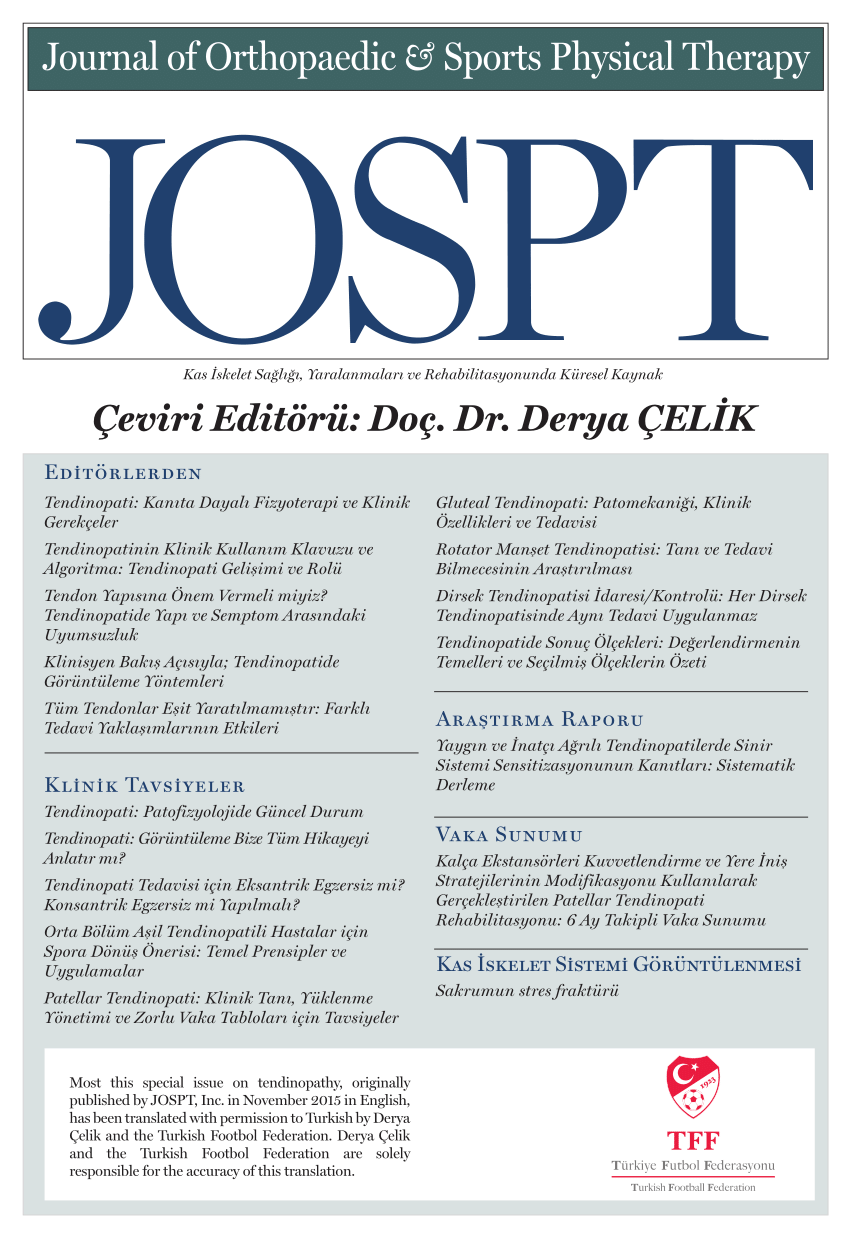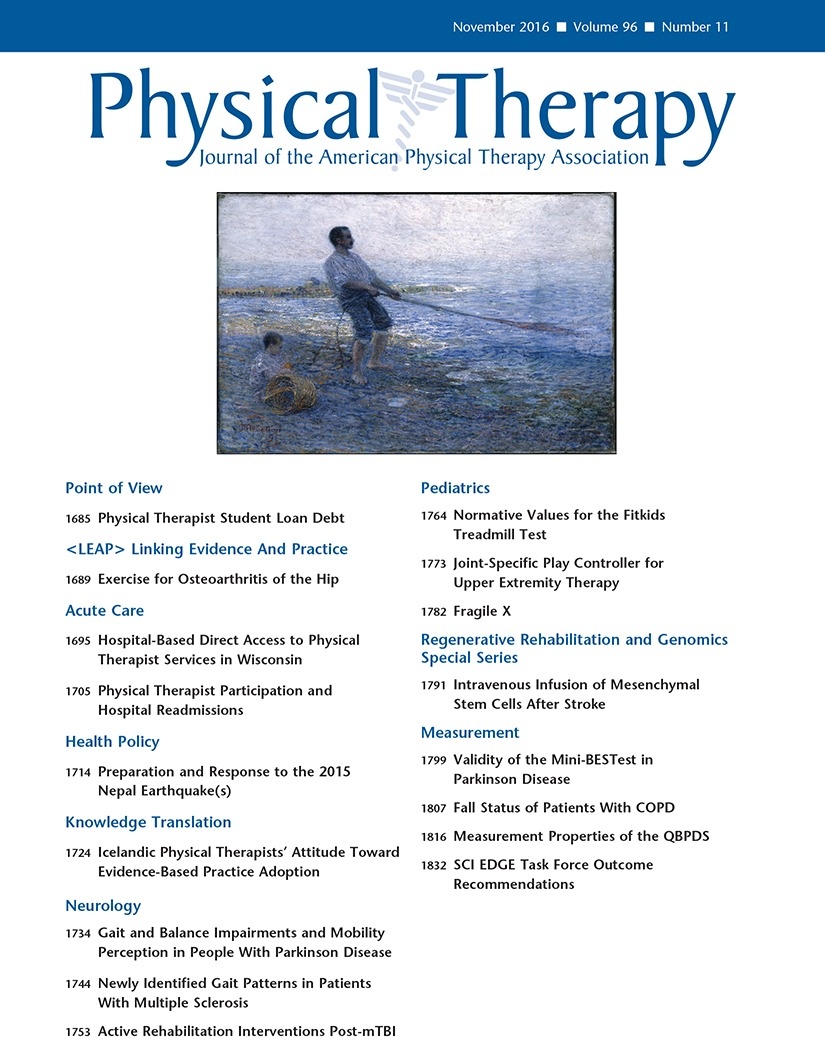PeerView
You are viewing the most viewed ACE Reports by Primary Care Physicians over the last 30 days in all specialties.
Displaying
100%
②
Synopsis:
47 patients with combined anterior cruciate ligament (ACL) and medial collateral ligament (MCL) injuries were randomized to receive either operative treatment on both ACL and MCL or operative treatment just on ACL. It was observed that the non-operative treatment of the MCL led to a greater range of motion and recovery of quadriceps power generation during early follow-ups.
Read More »
Author verified Level 2 RCT
②
Synopsis:
60 patients with dominant-hand thumb carpometacarpal osteoarthritis (OA) were randomized into two groups to measure the effects of either radial nerve mobilization treatment or a nontherapeutic placebo treatment on pain sensitivity and pinch strength. At 2 months follow-up, patients who underwent radial nerve mobilization experienced a decrease in pain sensitivity in the trapeziometacarpal joint and an increase in tip and tripod pinch strength.
Read More »
Author verified Level 2 RCT
①
Synopsis:
84 patients over 18 years of age with isolated rib fractures were included in this single center, prospective, placebo controlled, double blind trial.Patients were randomly allocated to receive either 10% lidocaine spray (LS; n=29), etofenamate spray (ES; n=28) or placebo spray (PS; n=27).The primary outcome of interest was pain intensity measured using a numerical rating scale (NRS) at baseline, and 15, 30, 60 and 120 minutes.Other outcomes of interest included rescue medication requirements and adverse events.Study findings suggest that all three groups demonstrated similar NRS scores, with no significant difference in pain reduction found at any timepoint.The maximum reduction was seen in the LS group between baseline and 120 minutes, however this difference was not statistically significant.It was also seen that the need for rescue medication was lowest in the LS group; a difference that was found to be clinically significant but not statistically significant. Importantly, only one...
Read More »
Author verified Level 1 RCT
①
Synopsis:
Forty-seven patients with single-level cervical radiculopathy were randomized to receive either BRYAN CDA (cervical disk arthroplasty; n=22) or ACDF (anterior cervical discectomy and fusion; n=25) in a prospective, randomized, controlled trial conducted as a Food and Drug Administration Investigational Device Exemption trial.The primary outcomes of interest included visual analog scales (VAS) for neck and arm pain, neck disability index (NDI), and reoperation rates.The follow-up rate was 91.3%.Both groups demonstrated significantly improved NDI, VAS arm pain, and VAS neck pain scores at 20 years compared to preoperative scores.However, there were no significant differences between CDA and ACDF groups at 20 years for NDI, VAS arm pain, and VAS neck pain scores.Reoperations were reported in 41.7% of ACDF patients and 10.0% of CDA patients. Both CDA and...
Read More »
Level 1 RCT
②
Synopsis:
351 patients with a meniscus tear and knee osteoarthritis (OA) were randomized to either undergo arthroscopic partial meniscectomy (APM) followed by a physical therapy program or physical therapy alone, in order to compare clinical and functional outcomes. Following treatment over a 12 month period, all patients improved similarly in WOMAC physical-function score, KOOS pain score, and SF-36 physical-activity score.
Read More »
Author verified Level 2 RCT
②
Synopsis:
186 patients with a severe lateral ankle sprain (type III) were randomized to treatment to 3 weeks of rigid immobilization with a walking boot followed by 3 weeks of immobilization with a functional brace, or to a functional brace for 6 weeks.The purpose was to compare these two conservative treatment methods for outcomes in pain, function, and ankle stability up to 12 weeks after the injury.AOFAS scores were better for the first 6 weeks in patients receiving the functional brace, and pain and comfort outcomes also benefited within the first few weeks from using a functional brace. By 12 weeks,...
Read More »
Author verified Level 2 RCT
②
Synopsis:
A total of 25 studies (randomized controlled trials and cohort studies) were included in this systematic review and meta-analysis investigating mobilization and weight-bearing following open reduction and internal fixation of ankle fractures.The purpose of this study was to examine the effectiveness of different postoperative rehabilitation protocols. The results of...
Read More »
Author verified Level 2 Meta Analysis
②
Synopsis:
154 female cancer survivors were randomized to receive either a 12-month aerobic-resistance exercise program or a home-based exercise regimen.The purpose of this study was to compare bone outcomes following the two treatments to determine their effect on bone loss in this patient population.Both groups experienced significant losses in bone mineral density at multiple sites over the 12 months study period.No significant differences were observed between groups in the change in bone mineral density at the lumbar spine, greater trochanter, hip, or femoral neck. Subgroup analyses found...
Read More »
Level 2 RCT
③
Synopsis:
A total of 15 randomized controlled trials (RCTs) were included in this systematic review to determine the efficacy and safety of different forms of acupuncture in the management of musculoskeletal disorders.Ten trials reported on musculoskeletal disorders of the upper extremities: three on carpal tunnel syndrome; two on lateral epicondylitis; four on shoulder pain; and one on general upper extremity pain.Five trials reported on musculoskeletal disorders of the lower extremity: two on knee pain; one on plantar fasciitis; one on Achilles tendinopathy; and one on piriformis syndrome.The evidence identified presented inconsistent results for the use of acupuncture for musculoskeletal disorders.Findings indicated that traditional needle acupuncture may be effective for carpal tunnel syndrome and Achilles tendinopathy, electroacupuncture may be effective for shoulder injuries and may be equally as effective as night wrist splinting for carpal tunnel syndrome.Finally, the use of dry needling for plantar fasciitis syndrome led to non-clinically relevant differences versus placebo, while traditional needle acupuncture was not effective for nonspecific upper extremity pain or patellofemoral syndrome. The results of...
Read More »
Level 3 Meta Analysis
①
Synopsis:
27 randomized controlled trials were included in this systematic review and meta-analysis on workplace-based neck and shoulder strengthening intervention, general fitness training, and ergonomic approach interventions, and their effect on either reducing neck pain among symptomatic office workers, or preventing the development of neck pain in general among office workers.Among office workers with neck pain, there was moderate-quality evidence in support of either workplace-based neck and shoulder strengthening intervention or general fitness training for greater pain reduction than no training. A single study...
Read More »
Level 1 Meta Analysis




 LOGIN
LOGIN



